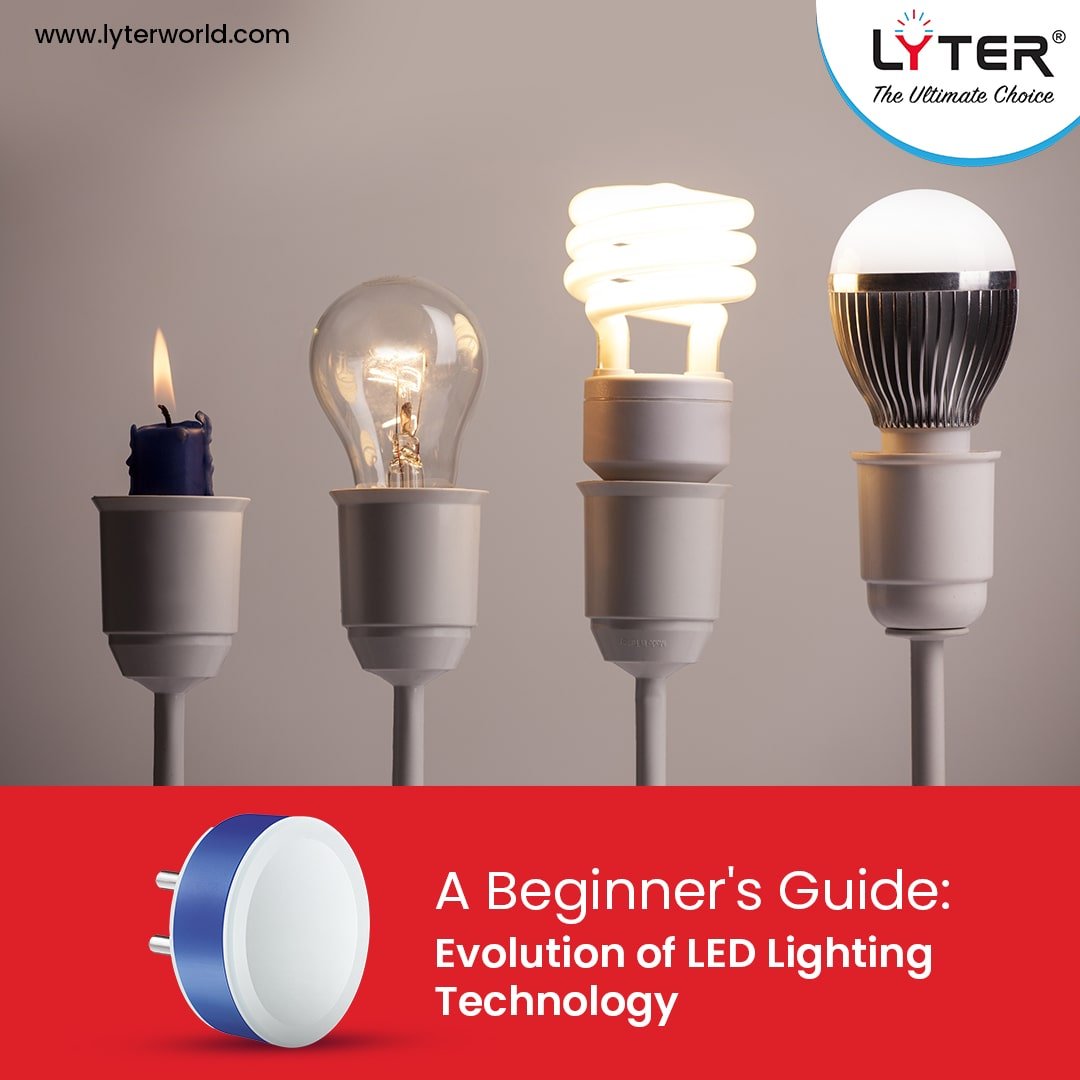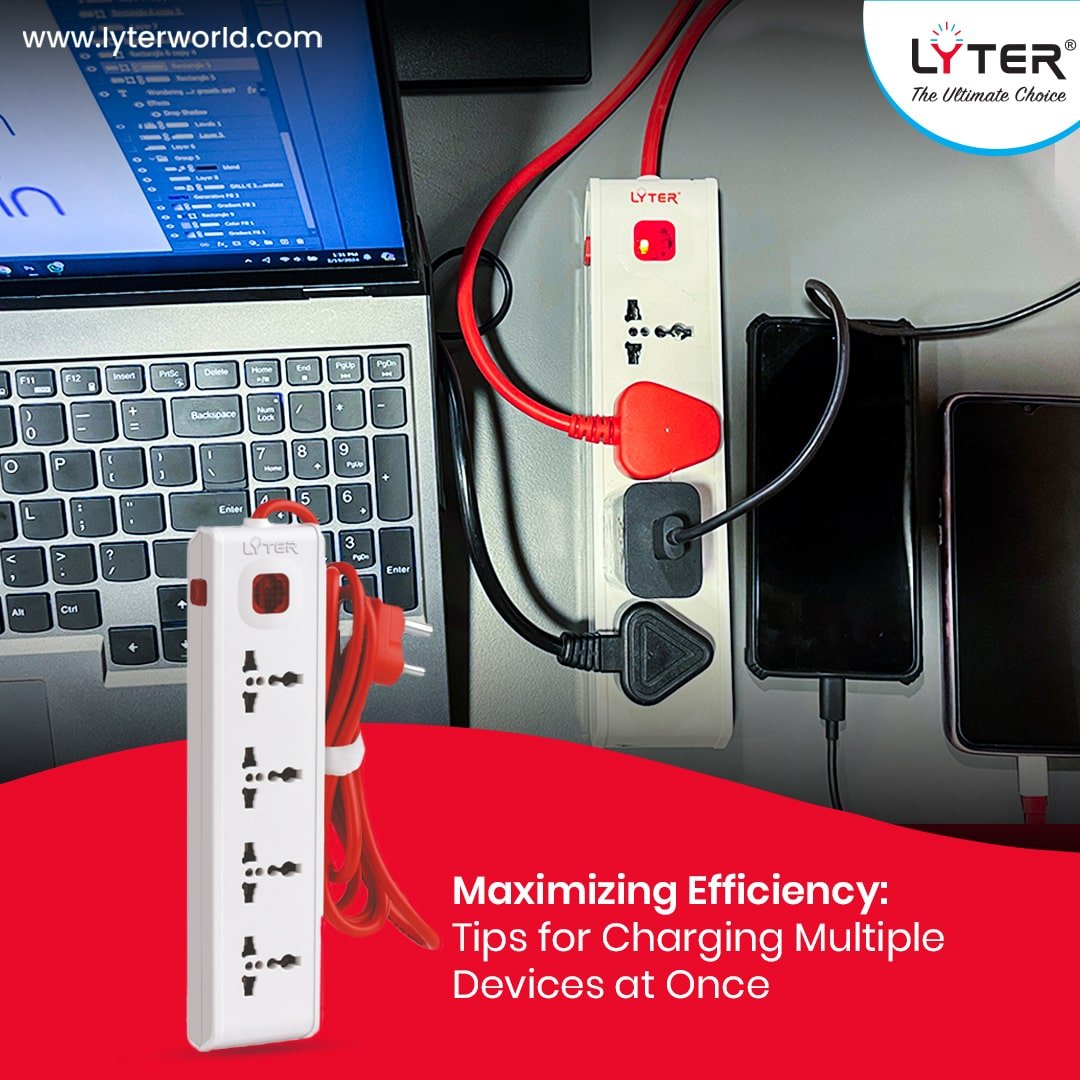There was a time when the setting sun marked the end of the day’s activities. In an era devoid of electric lights, People relied on natural light during the day and simple sources like candles or oil lamps at night. In such a world, productivity suffers, safety is at risk, and the beauty of our surroundings fades away.
It was a challenging time, but humans found ways to overcome the darkness. Over time, we invented better lighting solutions, gradually lighting up their world.
The evolution of LED (Light Emitting Diode) lighting technology has seen a fascinating journey from its modest beginnings to becoming the forefront of lighting solutions worldwide.
In this blog, we’ll explore the evolution of lighting and how LED lighting has transformed the way we light up our world.
The Beginning of Evolution
The story of LED technology began in the early 20th century, but Nick Holonyak Jr. invented the first practical LED in 1962. Initially, LEDs were available only in red and were used primarily as indicators in laboratory equipment and electronic devices. Their brightness was limited, making them unsuitable for general lighting purposes.
The Colorful Expansion
As technology progressed, the 1970s and 1980s witnessed significant advancements. Researchers developed LEDs in various colors, including green, yellow, and orange, by using different materials and refining manufacturing processes. However, blue LEDs remained elusive, posing a challenge to scientists and engineers.
The breakthrough came in the early 1990s when Shuji Nakamura invented the first efficient blue LED, a milestone that later earned him a Nobel Prize. This invention was revolutionary, as combining blue with red and green LEDs allowed for the creation of white light, opening the doors to a myriad of lighting applications. There are so many new innovations like night lamps, LED TVs, string lights, decorative lights, LED flashlights, and lanterns.
The Era of Illumination
With the advent of white LED light, the 2000s marked the beginning of LEDs’ dominance in the lighting industry. These new LEDs were brighter, more energy-efficient, and had a longer lifespan compared to traditional incandescent and fluorescent lights. This efficiency not only revolutionized home and commercial lighting but also paved the way for innovative uses in streetlights, vehicles, and public spaces.
Advancements and Innovations
The last two decades have seen the relentless evolution of LED technology. Advances in materials science and manufacturing techniques have led to LEDs that are brighter, more efficient, and available in a wider range of colors and color temperatures.
There have been advancements in the color rendering index and color temperature control. When you want LED performance and longevity to expand, then heat dissipation is needed.
Smart LED lighting systems, which can be controlled remotely via smartphones or voice-activated devices, are becoming increasingly popular. They offer unprecedented control over lighting environments. Smart systems include Amazon Alexa, Apple Home Kit, and Google Assistant.
All these updates will help you control the lights with voice commands and mobile apps and make them part of the smart home ecosystem. These systems come with many advanced features, such as color tuning, color temperatures, scheduling, and automation.
The Future is Bright
The Department of Energy has said that LEDs are the most energy-efficient lighting solutions, cutting down energy consumption by 90%. So, by 2035, energy savings from LEDs might exceed 569 TWH per year. Looking ahead, the future of LED lighting promises even more exciting advancements.
OLEDs and quantum dots are redefining the standards of efficiency, flexibility, and color rendering. The ongoing research and development aim to reduce the environmental impact of lighting products further and enhance their functionality and integration with smart home and city infrastructures.
Furthermore, many electrical accessories manufacturers in India are integrating LED lighting with sensor technologies, and artificial intelligence has the potential to optimize energy use, improve user experience, and create adaptable lighting settings that respond intelligently to human presence and preferences.
As the lighting sector innovates and evolves, LED technology’ revolutionary potential illuminates the path to a brighter, more sustainable future.
Get the Best LED Lighting Solutions from Lyter
The evolution of LED lighting technology is a testament to human ingenuity and perseverance. From simple indicator lights to the backbone of modern lighting solutions, LEDs have come a long way. As we continue to innovate and improve, LED lighting will undoubtedly play a crucial role in shaping our sustainable and technologically advanced future.
This journey through the evolution of LED lighting technology demonstrates not just how far we’ve come but also illuminates the path forward.
As we look towards more sustainable and efficient lighting solutions, LED technology continues to hold the promise of brighter and more vibrant futures for us all. In this Lyter stands at the forefront of this LED lighting revolution, offering cutting-edge solutions that merge innovation with sustainability.
With a commitment to excellence and a dedication to pushing the boundaries of what LED technology can achieve, Lyter illuminates the world with brilliance and efficiency. Lyter’s LED lighting solutions illuminate homes, offices, and vast outdoor spaces, exceeding expectations not just by providing light but by offering an experience.
With a focus on quality, durability, and energy efficiency, Lyter’s products are not only environmentally friendly but also cost-effective in the long run.








